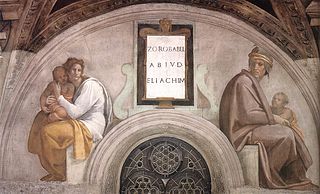
Matthew 1:13 is the thirteenth verse of Matthew 1 of the Gospel of Matthew in the New Testament. The verse is part of the section where the genealogy of Joseph, the father of Jesus, is listed. This verse covers the section somewhat after the Babylonian Captivity six generations before Jesus.
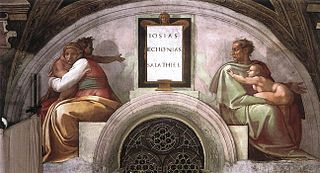
Matthew 1:12 is the twelfth verse of the first chapter of the Gospel of Matthew in the New Testament. The verse is part of the section where the genealogy of Joseph, the betrothed of Mary, the mother of Jesus Christ, is listed.

Matthew 1:11 is the eleventh verse of the first chapter of the Gospel of Matthew in the New Testament. The verse is part of the section where the genealogy of Joseph, the father of Jesus, is listed. It is the last verse of the middle third of the listing.
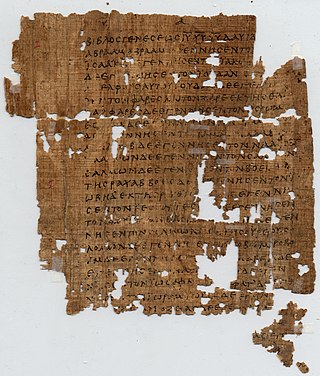
Matthew 1 is the first chapter of the Gospel of Matthew in the New Testament. It contains two distinct sections. The first lists the genealogy of Jesus from Abraham to his legal father Joseph, husband of Mary, his mother. The second part, beginning at verse 18, provides an account of the virgin birth of Jesus Christ.

Matthew 1:8 is the eighth verse of the first chapter of the Gospel of Matthew in the New Testament. The verse is part of the section where the genealogy of Joseph, the legal father of Jesus, is listed.

Matthew 1:7 is the seventh verse of the first chapter of the Gospel of Matthew in the New Testament. The verse is part of the section where the genealogy of Joseph, the legal father of Jesus, is listed.
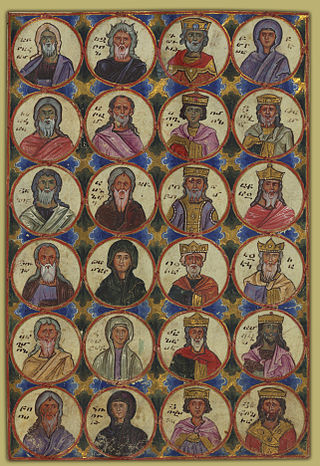
The New Testament provides two accounts of the genealogy of Jesus, one in the Gospel of Matthew and another in the Gospel of Luke. Matthew starts with Abraham and works forwards, while Luke works back in time from Jesus to Adam. The lists of names are identical between Abraham and David, but differ radically from that point. Matthew has twenty-seven generations from David to Joseph, whereas Luke has forty-two, with almost no overlap between them or with other known genealogies. They also disagree on who Joseph's father was: Matthew says he was Jacob, while Luke says he was Heli.

Matthew 1:5 is the fifth verse of the first chapter in the Gospel of Matthew in the New Testament. The verse is part of the section where the genealogy of Joseph, the legal father of Jesus, is listed.
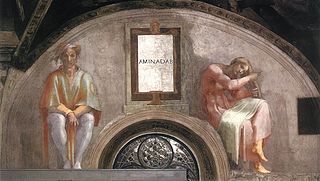
Matthew 1:4 is the fourth verse of the first chapter in the Gospel of Matthew in the New Testament. The verse is part of the section where the genealogy of Joseph, the legal father of Jesus, is listed.

Matthew 1:3 is the third verse of the first chapter in the Gospel of Matthew in the New Testament. The verse is part of the section where the genealogy of Joseph, the legal father of Jesus, is listed.

Matthew 1:2 is the second verse of the first chapter in the Gospel of Matthew in the New Testament. The verse is the first part of the section where the genealogy of Joseph, the legal father of Jesus, is listed.

Matthew 1:1 is the opening verse in the first chapter of the Gospel of Matthew in the New Testament of the Christian Bible. Since Matthew is traditionally placed as the first of the four Gospels, this verse commonly serves as the opening to the entire New Testament.

Matthew 1:14 is the fourteenth verse of the first chapter of the Gospel of Matthew in the New Testament. The verse is part of the section where the genealogy of Joseph, the father of Jesus, is listed.
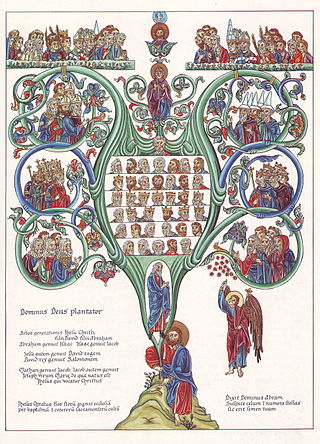
Matthew 1:17 is the seventeenth verse of the first chapter in the Gospel of Matthew in the New Testament. The verse is the conclusion to the section where the genealogy of Joseph, the step-father of Jesus, is listed.

Matthew 1:15 is the fifteenth verse of the first chapter of the Gospel of Matthew in the New Testament. The verse is part of the section where the genealogy of Joseph, the father of Jesus, is listed.
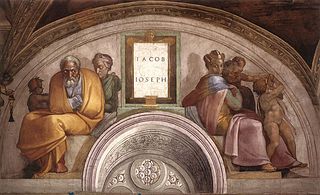
Matthew 1:16 is the sixteenth verse of the first chapter of the Gospel of Matthew in the New Testament. The verse is the final part of the section that traces the genealogy of Joseph, the husband of Mary, the mother of Jesus, down from Abraham.

Matthew 1:20 is the twentieth verse of the first chapter in the Gospel of Matthew in the New Testament. Previously Joseph had found Mary to be pregnant and had considered leaving her. In this verse an angel comes to him in a dream and reassures him.

Matthew 2:10 is the tenth verse of the second chapter of the Gospel of Matthew in the New Testament. The magi, dispatched by King Herod, have been shown the location of the infant Jesus by the Star of Bethlehem. In this verse they react to this.

Matthew 3:14 is the fourteenth verse of the third chapter of the Gospel of Matthew in the New Testament. Jesus has come to John the Baptist to be baptized, but in this verse John balks at doing so.

Matthew 4:13 is the thirteenth verse of the fourth chapter of the Gospel of Matthew in the New Testament. In the previous verse, Jesus returned to Galilee after hearing of the arrest of John the Baptist. In this verse, he leaves from Nazareth to Capernaum.




















